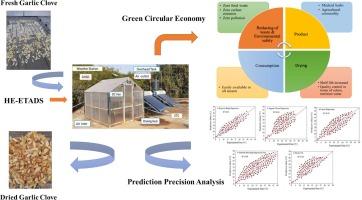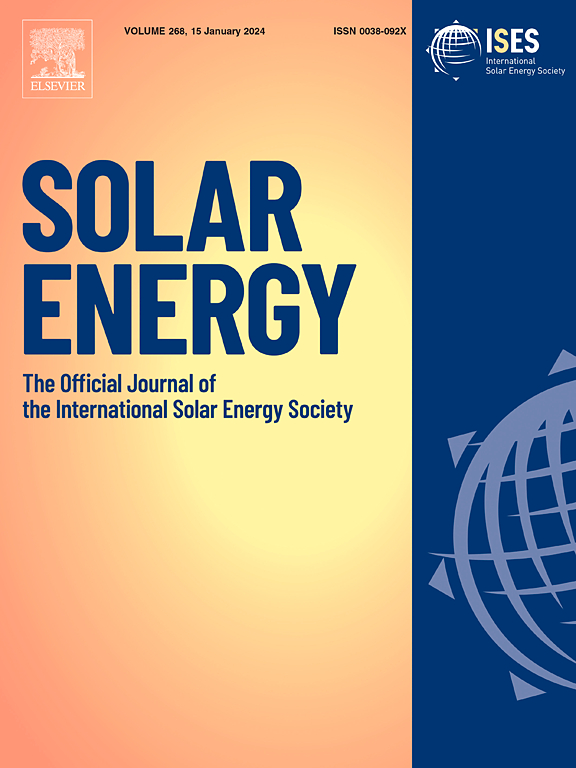Predictive modelling with machine learning of garlic clove for novel designed solar drying system
IF 6
2区 工程技术
Q2 ENERGY & FUELS
引用次数: 0
Abstract
The design method of dual working medium, heat exchanger-evacuated tube assisted drying system is proposed in this work. Operation control method of solar drying system is specified. In order to achieve a drying cabin suitable air temperature controlling method and the expected operating environment of the system, the evacuated tube solar collector with dual-function hybrid drying system is considered as a case. Effect of operating ambient factors on efficiency of solar heating unit (SHU) is evaluated using traditional thermodynamics, as well as five different machine learning (ML) algorithms using Python software. The aim of this is to predict thermal performance of SHU. Influence of ambient temperature, solar intensity, and water flow in SHU on outlet air temperature as well as collecting efficiency are observed. Furthermore, ambient relative humidity is found to be the most important effect parameter for the outlet temperature of solar heating unit. As a result, the randomised lasso algorithm suggests that solar intensity is a crucial parameter. Gradient boosting regression tree (GBRT) can be considered as the good fit prediction performance with MAE of 0.31 and 0.59, RSME of 0.54 and 0.72, and coefficient of determination (R2) of 0.98 and 0.94 on training as well as testing values, correspondingly. This study also pointed out the direction for the application and development of thermodynamics analysis and machine learning.

利用机器学习为新型太阳能干燥系统设计蒜瓣预测模型
本研究提出了双工作介质、热交换器-真空管辅助干燥系统的设计方法。明确了太阳能干燥系统的运行控制方法。为了实现适合空气温度控制方法和系统预期运行环境的干燥舱,以真空管太阳能集热器双功能混合干燥系统为例进行了研究。使用传统热力学以及 Python 软件的五种不同的机器学习(ML)算法,评估了运行环境因素对太阳能加热装置(SHU)效率的影响。其目的是预测 SHU 的热性能。观察到环境温度、太阳强度和 SHU 中的水流量对出口空气温度和收集效率的影响。此外,还发现环境相对湿度是影响太阳能加热装置出口温度的最重要参数。因此,随机套索算法表明太阳强度是一个关键参数。梯度提升回归树(GBRT)具有良好的拟合预测性能,其 MAE 分别为 0.31 和 0.59,RSME 分别为 0.54 和 0.72,训练值和测试值的判定系数(R2)分别为 0.98 和 0.94。这项研究也为热力学分析和机器学习的应用和发展指明了方向。
本文章由计算机程序翻译,如有差异,请以英文原文为准。
求助全文
约1分钟内获得全文
求助全文
来源期刊

Solar Energy
工程技术-能源与燃料
CiteScore
13.90
自引率
9.00%
发文量
0
审稿时长
47 days
期刊介绍:
Solar Energy welcomes manuscripts presenting information not previously published in journals on any aspect of solar energy research, development, application, measurement or policy. The term "solar energy" in this context includes the indirect uses such as wind energy and biomass
 求助内容:
求助内容: 应助结果提醒方式:
应助结果提醒方式:


